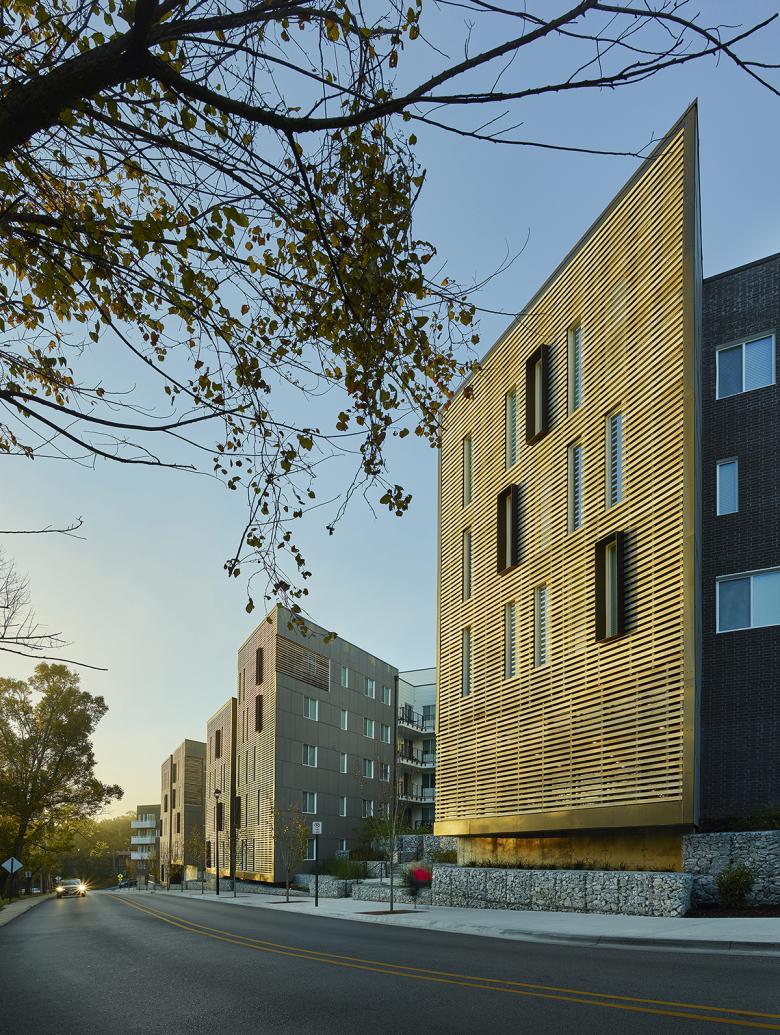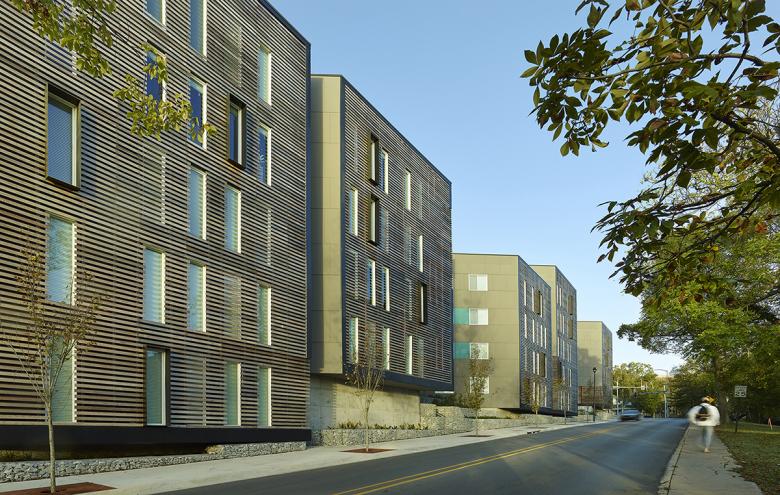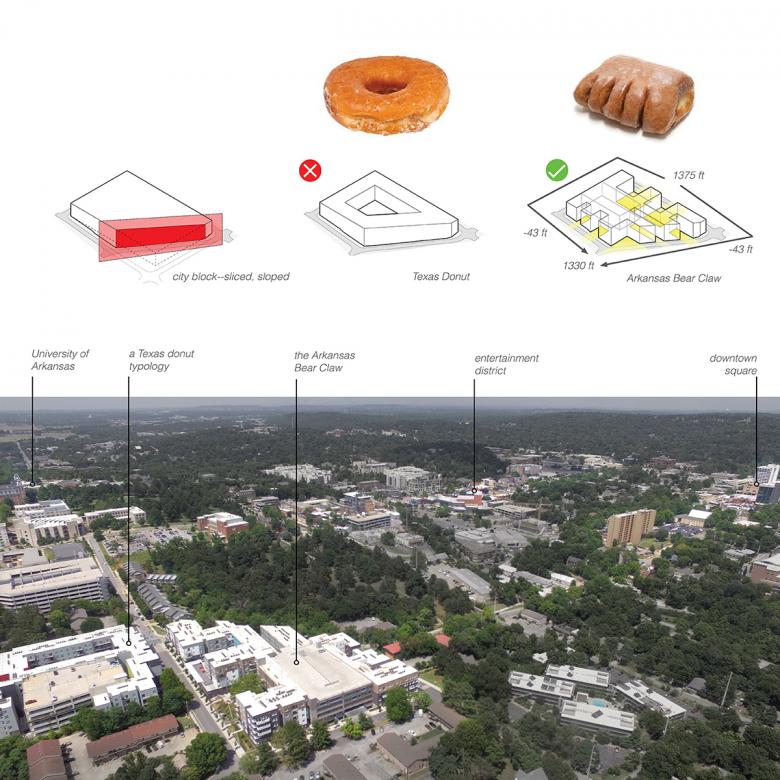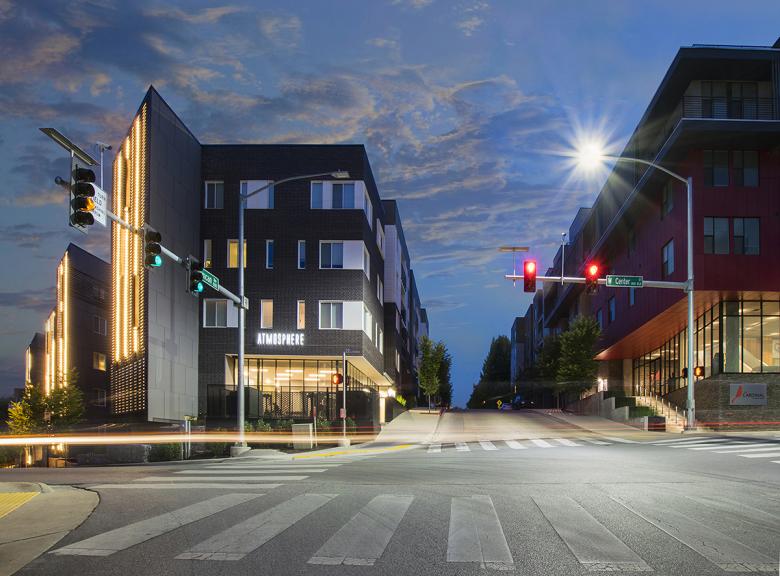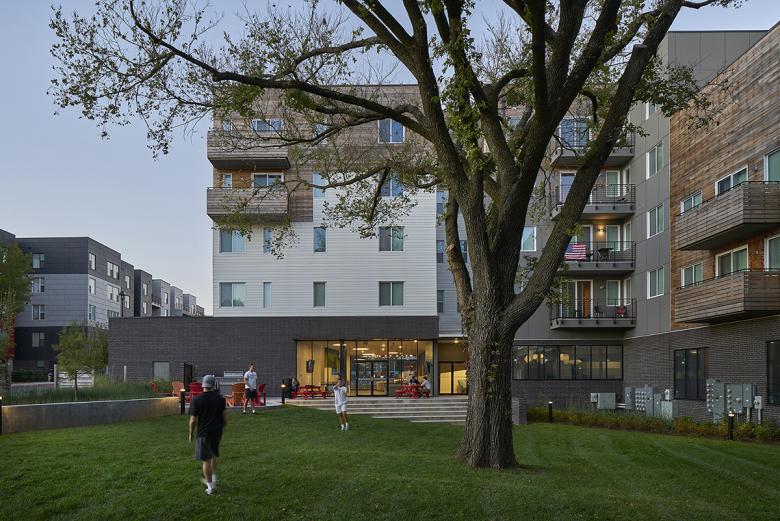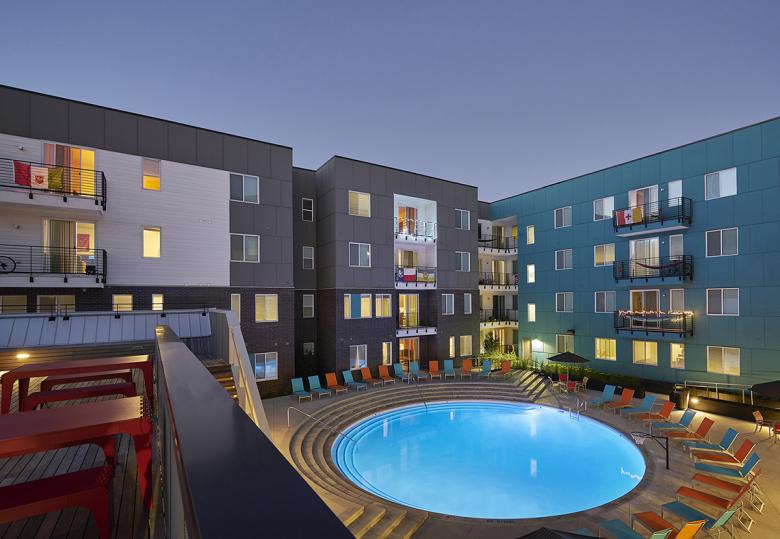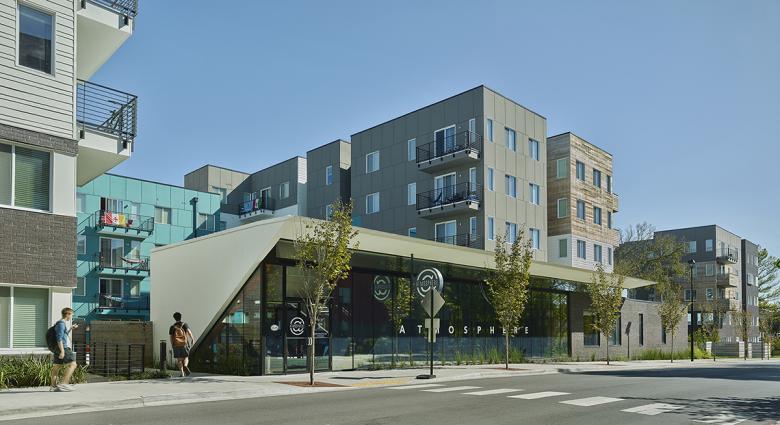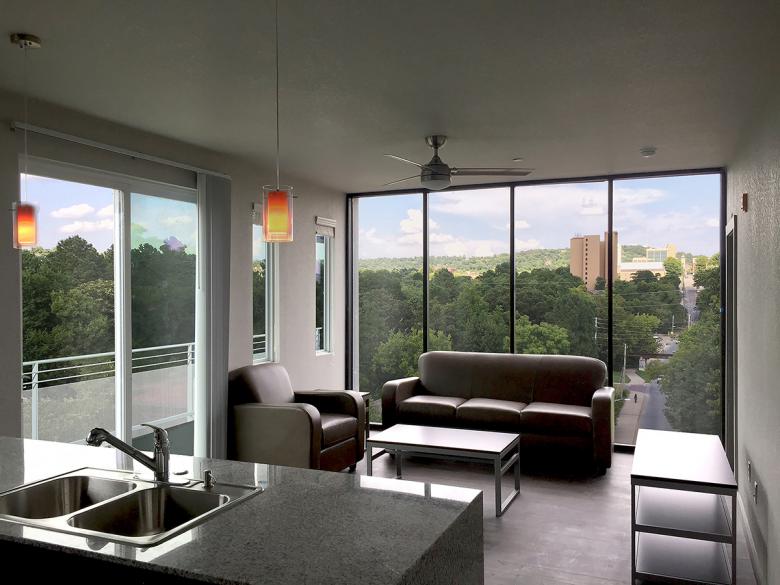modus studio
Arkansas Bear Claw
modus studio
10. September 2018
Photo: Timothy Hursley
One consequence of the boom in higher education is that college towns like Fayetteville, where the University of Arkansas is located, need places to house the increasing number of students. Enter the Arkansas Bear Claw, a large-scale development for more than 600 students just steps from the U of A campus. Modus studio answered a few questions about the project with a distinctive name.
Project: Arkansas Bear Claw, 2017
Location: Fayetteville, Arkansas, USA
Client: Trinitas Ventures
Architect: modus studio
Project Architect: Chris Baribeau
Project Manager: Aaron Speaks
Project Team: David McElyea, Graham Patterson, Suzana Annable, Leanne Baribeau, Philip Rusk, Cory Amos, Michael Pope
Structural Engineer: SCA Consulting Engineers
MEP/FP Engineer: HP Engineering
Landscape Architect: Ecological Design Group
Contractor: Trinitas Construction
Civil Engineer: McClelland Consulting Enginners
Site Area: 3.4 acres
Building Area: 325,233 sf
Looking east along Center Street (Photo: Timothy Hursley)
Please provide an overview of the project.
Located on approximately three and a half acres of urban hillside in Fayetteville, Arkansas Bear Claw is a 325,233 square foot student-focused multifamily housing complex adjacent to the University of Arkansas. Completed in August of 2017, this five-story development houses 628 students in 228 apartment units.
Looking west along Center Street (Photo: Timothy Hursley)
What are the main ideas and inspirations influencing the design of the building?
We wanted to rethink student housing industry standards, and the dramatic Ozark topography of the site forced our hand at this. The scale of the pedestrian is extremely important at this location between the University of Arkansas campus and downtown Fayetteville. In lieu of an unforgiving massive donut wall along the street, the formal carving of the Arkansas Bear Claw presents a uniquely scaled street experience that is at once an inviting urban rhythm and articulated building form along the Fayetteville hillside. Each wing of the building is focused around preserved specimen trees and programmed community amenity spaces. The tenant clubhouse is counter-intuitively located mid-block, a glass box that provides a transparent threshold between the street and the pool courtyard. The origami roof form captures the entry and provides a roof deck that gives tenants the outdoor opportunity to straddle the public and private realm.
Donut vs. bear claw diagram (Image: modus studio)
How does the design respond to the unique qualities of the site?
The project occupies a complex Ozark site with extensive topography. This defines the building characteristics in stepping massive forms and angular geometries that are the resultant of Center Street diagonally slicing the hillside, which creates an unusual trapezoidal block. These native characteristics drove the architectural concepts and delivered in built form a stark contrast to the most normative student housing typologies.
Site axonometric with Center Street (Image: modus studio)
How did the project change between the initial design stage and the completion of the building?
Initially, the project took on more of what we call the Texas Donut configuration, a simple multifamily typological form, easily understood, capable of delivering standard industry building widths, but often leading to benign courtyards and little daylight. The design quickly evolved into the Arkansas Bear Claw form, with its cinnamon goodness and proportionally correct sweet veil. It is more form-driven with natural pockets of space, allowing ample and varied daylighting experiences. The courtyards between building wings are extraverted engageable spaces more capable of playing with topography, pedestrians, and drivers alike.
Corner of Hill Avenue and Center Street (Photo: Timothy Hursley)
What products or materials have contributed to the success of the completed building?
A layered palette of brick, naturally weathering cedar screens and siding, fiber cement board, and steel carefully compose the massive wings of this dense five-story apartment construction.
Email interview conducted by John Hill.
Corner of Center Street and Duncan Avenue at night (Photo: modus studio)
One of two courtyards along Duncan Avenue (Photo: modus studio)
Inside first courtyard along Duncan Avenue (Photo: Timothy Hursley)
Inside second courtyard along Duncan Avenue (Photo: Timothy Hursley)
Storefront along Duncan Avenue (Photo: Timothy Hursley)
Storefront interior (Photo: Timothy Hursley)
Apartment interior (Photo: modus studio)
Related articles
-
Arkansas Bear Claw
on 9/10/18
-
Manzeum
on 5/30/17

